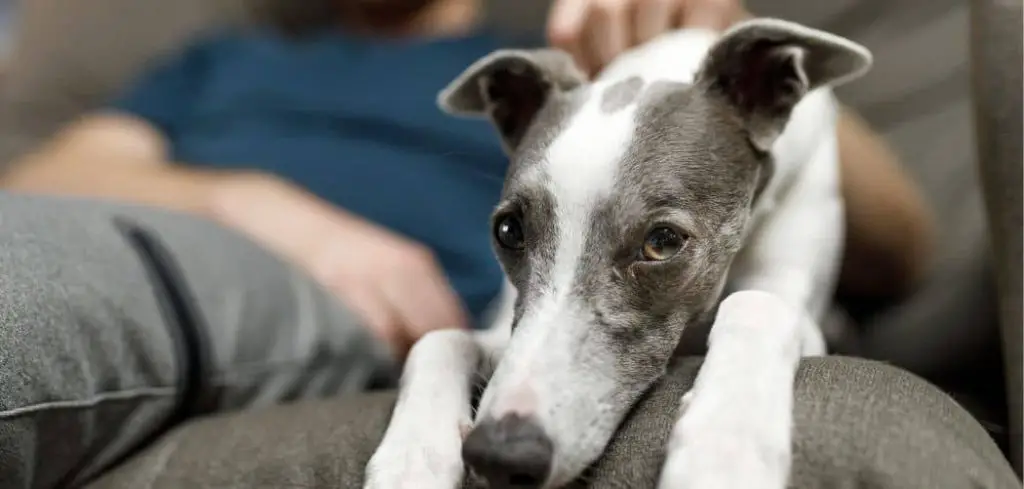If your dog refuses to eat from their bowl but happily eats when you hand feed them, it can be frustrating and concerning.
Many dog owners worry that this behavior signals a deeper issue with appetite, anxiety, or even health problems.
We outline the common reasons for a dog only eating when hand fed, what you can do, and when to seek veterinary help.
Dog Only Eats When Hand Fed — Why It Happens
A dog that only eats when hand fed is often motivated by behavior, environment, or underlying health conditions. Some dogs learn to associate hand feeding with extra attention and comfort, while others may refuse food from their bowl because of stress, anxiety, or changes in their surroundings.
Pain in the mouth, nausea, or gastrointestinal issues can also make dogs hesitant to eat unless coaxed directly by their owner.

Dog Only Eats When Hand Fed: Common Causes
Learned Behavior and Reinforcement
Dogs are quick learners, and if they realize that refusing to eat from their bowl gets them special attention and hand-fed meals, they may repeat this behavior.
What starts as an occasional hand-fed treat can easily become a routine, with the dog expecting meals to come directly from your hand.
Read more: Dog Only Wants Human Food (What it means)
Anxiety and Stress
Some dogs feel vulnerable while eating from a bowl, especially in noisy or busy environments.
Separation anxiety, recent changes at home, or stress from new pets or people can all make a dog reluctant to eat alone.
Hand feeding may feel safer and more reassuring, which explains why they’ll accept food this way but not otherwise.
Medical Issues Affecting Appetite
If your dog has dental pain, gum disease, nausea, or other gastrointestinal problems, they may be reluctant to eat from their bowl.
The act of chewing or lowering their head into the bowl could cause discomfort. When hand fed, they may feel more encouraged and willing to eat despite the pain.
Picky Eating Habits
Some dogs develop selective eating habits where they turn down their food until offered in a way they find more appealing.
Hand feeding makes food seem like a special treat, reinforcing the behavior of waiting until you offer it directly.
Attention-Seeking Behavior
Dogs thrive on interaction with their owners. If they’ve learned that refusing food leads to prolonged engagement—like coaxing, petting, and hand feeding—they may hold out on eating until they get that attention. This behavior is common in companion breeds that crave closeness.
Changes in Feeding Environment
Something as simple as the placement of the bowl, the type of dish used, or even recent moves can affect eating behavior.
Some dogs dislike metal bowls that make noise or reflect light. If they are uncomfortable with their feeding area, they may refuse food unless it comes directly from you.
Read more: Dog Only Wants Treats Not Food (Why it happens)
What to Do If Your Dog Only Eats When Hand Fed
Start by evaluating whether this is purely behavioral or linked to a medical issue. If your dog otherwise seems healthy, you can work on gradually transitioning them back to eating from their bowl.
Place their food in the bowl and resist offering it by hand immediately. You can sit nearby to reassure them, but avoid turning every mealtime into hand-feeding time.
Try using puzzle feeders, raised bowls, or changing the type of dish to make eating more comfortable. If anxiety is the trigger, provide a calm, quiet feeding environment.
Consistency is key—if you sometimes give in and hand feed, your dog may continue holding out for special treatment.
When to Call or Visit Your Vet
If your dog’s refusal to eat from the bowl is accompanied by weight loss, vomiting, bad breath, drooling, or signs of pain while chewing, a veterinary check is necessary.
These symptoms could point to dental disease, gastrointestinal issues, or another underlying condition.
Puppies, senior dogs, or dogs with chronic health issues should be assessed sooner to rule out medical causes.
Even if the issue seems behavioral, a vet visit can give peace of mind and ensure nothing more serious is being missed.
Read more: Dog Only Drinking Water and Not Eating (Here’s why)
Key Takeaway
If your dog only eats when hand fed, it may be a learned behavior, a sign of stress, or a medical problem that makes eating uncomfortable.
While it can be tempting to keep hand feeding, helping your dog regain independence at mealtime is healthier long term.
Provide reassurance, adjust their feeding environment, and stay consistent. And if you suspect a health issue or the behavior doesn’t improve, consulting your vet is the best step for your dog’s well-being.
